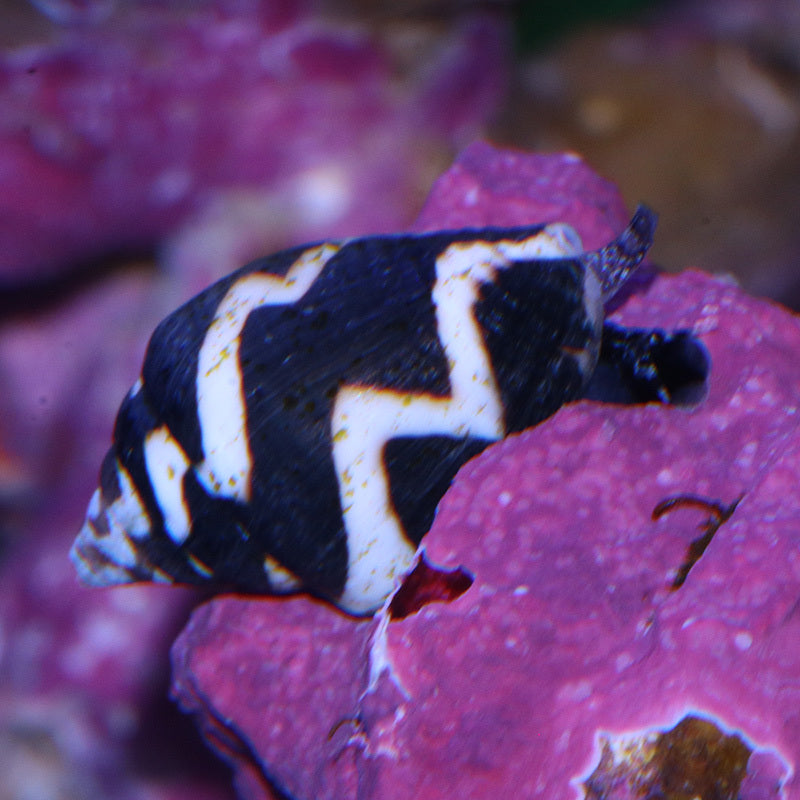Year End Clearance Sale 25% Off All Frags
Free Shipping Over $249 or $29.99 for Orders over $100
Lightning Dove Snail
$ 24.99
Please select all options.
How to Care for Lightning Dove Snail
written by Dave Burr
Lightning Dove Snails will burrow through the sand looking for detritus and small worms. They will forage around the live rock as well eating bits of leftover food as they go.
Feeding: You may supplement the Lightning Dove Snails' diet with mysis shrimp or small bits of meaty food.
Growth: Maintaining proper Ca, Alk, & Mg levels is important for growth of their shells.
Tip: Don't forget about your water parameters when combating algae blooms. Water chemistry is every bit as important as a good clean-up crew.
Care Level: Easy
Reef Compatible: Yes
Diet: Carnivore, Detritus, Omnivore
Range: Indo-Pacific
Family: Columbella
Water Conditions: 75-80° F; sg 1.024-1.026 (1.025 is ideal); pH 8.1-8.4 Ca 420-440 ppm, Alk 8-9.5 dKH, Mg 1260-1350, Nitrates <10ppm, Phosphates < .10ppm
Water Chemistry: It is important that proper calcium (420-440 ppm), alkalinity (8-9.5 dkh - run it 7-8 if you are carbon dosing) , and magnesium levels (1260-1350 ppm) are maintained. Raising magnesium levels gradually up to 1400-1600 ppm can help to combat algae outbreaks, just keep CA and Alk in line as you raise the Mg. Nitrates should be below 10 ppm and phosphates should be below .10 ppm. We recommend doing a water change when Nitrate levels rise to 10 ppm. It is important to replace your phosphate media when phosphates rise to .10 ppm. Media Reactors make the most efficient use of your phosphate media by fluidizing it.
Dosing: Vivid Aquariums uses and recommends dosing pumps to automate the dosing of additives and keep your levels more constant. A dosing pump can alleviate the chore of manually dosing your aquarium with Ca, Alk, & Mg 2,3, or 4 times per week and will benefit your aquarium by keeping your levels constant through frequent small additions of Ca, Alk, & Mg. Our tanks all progressed when we switched from 3 manual dosings per week to 70 automatic dosings per week and we got a lot more work done.


